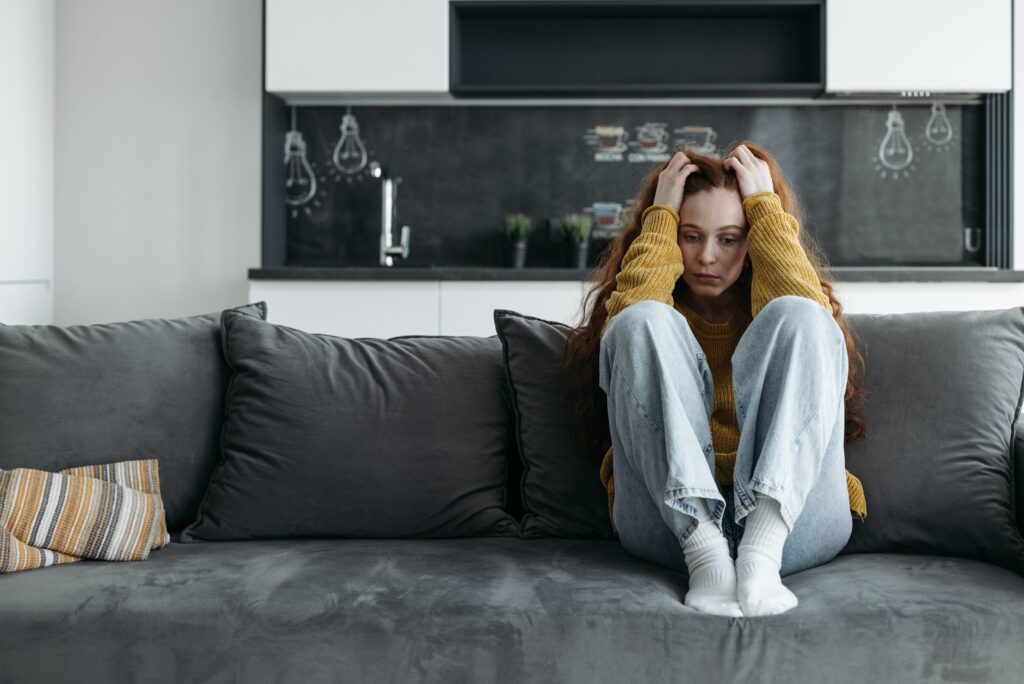Seasonal Depression
By Gabriella Mori
Seasonal Depression, otherwise known as Seasonal Affective Disorder (SAD), is a type of depression that starts and ends at about same time every year. Symptoms of SAD typically begin in the Fall and will persist through winter and end towards Spring. During these times, an individual may experience loss of interest in activities that used to be enjoyable to them or feeling sad overall. Those with bipolar disorder typically are at an increased risk for seasonal depression. SAD is diagnosed within 4 to 6 percent of the population and affects those ages from 18 to 30. Young adults can be more prone to SAD because of college or moving away from home. Many people have seasonal depression but are unaware of it.
Many doctors believe that SAD can be caused by a reduced activity of serotonin and an increased production of melatonin. This can cause an individual to feel sleepy or tired since both of these hormones help with sleep and regulating mood. Deficiency in vitamin D may also contribute to SAD and can interrupt serotonin activity. Sunlight is a factor in the causes of SAD because during the holiday season, the weather can become colder and the sky can become more cloudy. This also affects serotonin levels in an individual.

Seasonal depression is something my friends deal with, which prompted me to write about it. As someone who has dealt with Major Depressive Disorder (MDD) since I was twelve, I can empathize with those who deal with seasonal depression. Many people believe that SAD is just being sad during the holidays, there is more to this disorder than that. Being a young adult in college has made me realize more people deal with this than we know. Seasonal depression can affect those who have to move away from home and spend holidays alone. It is important to treat SAD as it can affect the daily tasks of an individual.
Here are some statistics provided by Micro Biz Mag, a small magazine company from the UK, that shows how SAD can affect the general population as well as their ages. It is shown that typically individuals from 16 to 34 experience SAD more commonly than other ages.

Treatment Options
Some of the common symptoms of SAD include daily fatigue, weight gain, and oversleeping. While therapy can treat seasonal depression, or SAD, there are many different treatments and ways an individual can treat their seasonal depression;
- Light therapy: where a patient is exposed to special bright light within the first hour of waking up. This will alter the brain chemicals in the individual’s mind that are linked to mood.
- Social activities: Taking part in social activities can help relieve the symptoms of seasonal depression. Whether it’s going out for dinner with your friends or joining a book club, social activities can increase your self-confidence as well as your mood.
- Exercise regularly: Physical activity can help to relieve stress and anxiety which both contribute to SAD. Exercise can help to increase your mood and ability to conquer everyday tasks.

- Schedule your day out: Scheduling your day out can help to relieve stress and will help you stay motivated to get through the day. It will also help you to not be overwhelmed by whichever tasks you need to complete throughout the day.
- Get enough vitamin D: Vitamin D can help to reduce symptoms of SAD as it is caused by not getting enough sunlight because of the seasons changing. Vitamin D is in almost everything such as yogurt, 2% milk, fish, as well as daily vitamin pills.
It is important to recognize the symptoms of SAD as well as to be aware of the different types of treatment that will benefit those you know with SAD. With the seasons changing as well as the holiday season coming around, seasonal depression can affect more people than you know.
References
MacNaught, S. (2021, September 30). Seasonal affective disorder statistics UK 2021 – how many people experience sad. Micro Biz Mag. Retrieved November 20, 2022, from https://www.microbizmag.co.uk/seasonal-affective-disorder-statistics/
Mayo Foundation for Medical Education and Research. (2021, December 14). Seasonal affective disorder (SAD). Mayo Clinic. Retrieved November 20, 2022, from https://www.mayoclinic.org/diseases-conditions/seasonal-affective-disorder/diagnosis-treatment/drc-20364722
Beth W. Orenstein and Michelle Pugle. (n.d.). 14 ways to ease seasonal depression. EverydayHealth.com. Retrieved November 20, 2022, from https://www.everydayhealth.com/depression/treatment/ways-to-ease-seasonal-depression/



